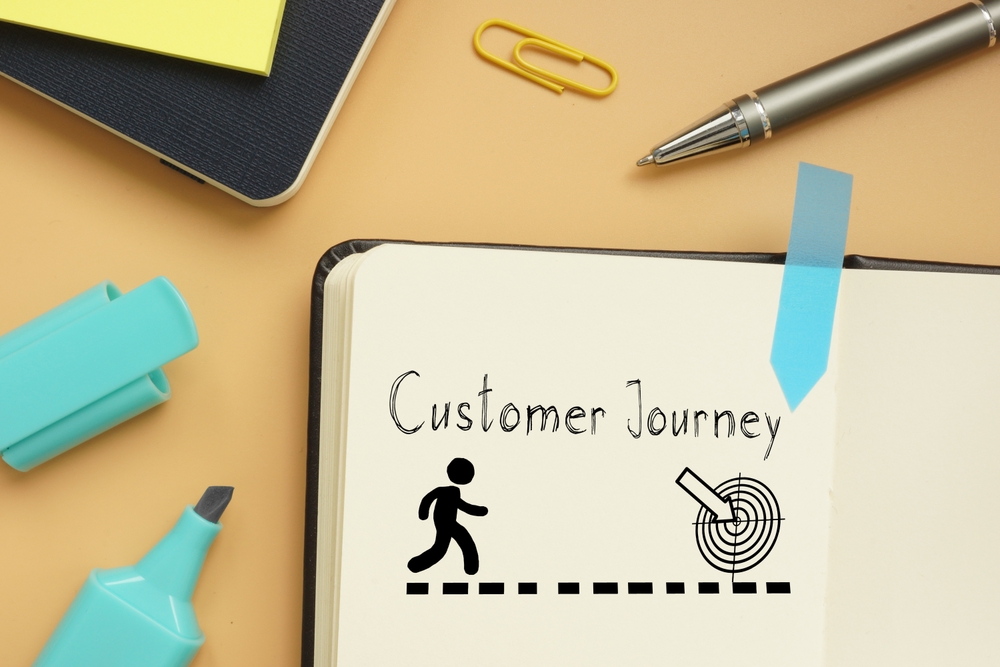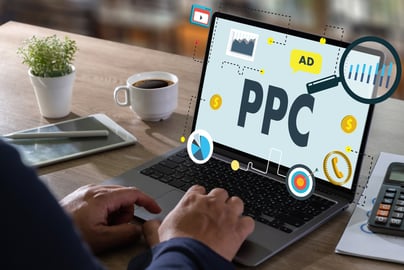The Customer Journey - Why it's so Important to the Success of your Business

The customer value journey is about turning strangers into super-fans of your business.
Understanding how this process works and how to leverage it in your marketing strategy is vital to your success.
The customer journey gives you a step-by-step process for attracting, converting and keeping your best customers. Digital marketing is all about encouraging customers to move along this journey faster.
Think of it like an adventure story, where the customer is a hero with a quest to solve, and you are the mentor to guide them on their perilous voyage.
So, what is the customer journey?
The customer journey can be split into eight steps. Customers travel along this path as they discover your brand, build a relationship with you, and become buyers and loyal fans.
Without your help along the way, customers will stall, get lost, or forget they even started. That’s why you need to create a marketing strategy to guide and encourage them.
- Aware: The first step is to make customers aware that your business even exists. Build brand awareness through creating quality content that attracts, engages and delights your customers. Reach customers where they are, when they’re ready.
Create top-of-funnel content including ads, social posts, blogs, ebooks, guides, reports, newsletters, case studies, templates, cheat sheets, videos and podcasts. Aim to get their attention, educate, entertain and inform. - Engage: After customers have had their initial interaction with your business, they move to the engagement stage. Create an ongoing conversation through emails and blog series.
- Subscribe: Once you start to build trust with your customers, you can ask them to subscribe. Offer them a lead magnet, an irresistible bribe that gives specific value to a customer in exchange for their contact details. For example, you could offer a free trial of your product or an authoritative guide that solves an issue in your industry. Read our 21 ideas for lead magnets that convert here.
- Convert: In the next stage, you want to convert them into a customer. Start with a low-cost offer, that only requires a small commitment (like a sample product, that costs $20 or less). The purpose is to transition them from simply a follower to a paying customer.
- Excite: Next, you’ll need to build excitement. Make the perfect post-purchase experience through including surprising extra features. For example, add a little note or piece of content in their package or send an email that details how to set up and use your product.
- Ascend: Upsell, upsell, upsell. The goal here is to create repeat purchases, so that customers ascend to the top of your product ladder. Instead of aiming for conversions, you are now aiming for bigger sales. Make your offers irresistible to encourage your customers to keep buying. Here’s the catch though, don’t be too pushy or you will turn people away.
- Advocate: Ask customers to share their experience by leaving reviews or social media posts. This is a great way to establish social proof for your business. Social proof increases conversions through building brand trust and credibility, growing brand awareness, and influencing decision-making.
- Promote: In the promotion stage, your customers actively spread the word about your business, products or services. They tell stories, make recommendations and share your offers. This increases your brand awareness and brings in more customers, thus completing the cycle.
How to Streamline the Customer Journey
Digital marketing pushes customers faster along their journey. With a focused strategy, you can accelerate and optimise each stage of the process and demand faster results.
So, what can you do to streamline the customer journey?
The best way to improve your customer journey is to reduce friction for your customer. Take the time to look through your website, blog, ads, and content to make sure it’s engaging, relevant and easy to use.
Here are some top tips to create a smoother customer journey:
- Conduct customer surveys: The easiest way to know what customers think about your business is by asking them. With this feedback, you can find areas to improve your process.
- Utilise heat-mapping: On your website, heat-mapping shows you which areas are getting the most clicks and interactions, and how long people are spending reading your pages. You can use this data to create stronger website pages.
- Maximise value on your website: Take a look through each page of your website and make sure it is still performing. Think about what you can change to maximise its value to customers.
- Create targeted content: Another way to speed up the customer journey is through creating targeted content that is relevant to the user and displayed at the right time.
- Send personalised messages: Engage with your customers through sending personalised messages that relate to their specific questions, interests and concerns.
- Use contextual ads: Contextual ads are a great way to reach new customers. For example, if someone is looking at buying a dress, you could show them ads for shoes and jackets to complete the outfit.
- Create a multi-channel approach: With a multi-channel approach, you can get your products directly in front of customers across various platforms. This helps to keep your business top of mind, build awareness and establish your brand as an authority.
- Use live chat: On your website, live chat options are essential for reaching customers and reducing friction. If they can easily ask questions about your products and services and get answers, then they will be more likely to make a decision.
- Include social proof: Including social proof tactics in your strategy will help speed up your customer journey. Social proof establishes your business as trustworthy, reliable, and an expert in your industry.
Take a look at your current customer journey plan and identify any gaps to create a stronger marketing strategy. Streamline your customer experience and see your conversions and sales soar.
Looking for more advice on marketing your business? Turn to Margin.


